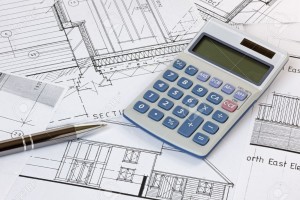All about the VAT Flat Rate Scheme
The VAT Flat Rate scheme was introduced in 2012 and it can be used by sole traders, partnerships and limited companies if they satisfy HMRC requirements. Unlike the standard VAT accounting , where you have to pay VAT on the basis of the difference between purchases and sales VAT, the flat rate scheme is a simple payment of a percentage of turnover. As such, it has been designed in order to help small businesses by means of sparing them from the work of recording sales and purchases.
The most beneficial aspect of the VAT Flat Rate Scheme is the time that is being saved on recording VAT on sales and purchases which usually commands hair yanking hassles in the standard VAT accounting. In addition to that, it would also save you from the stress caused by completing the VAT returns at the end of the quarter. More than that, it can even grant you the opportunity to handle cash flow since it renders a much easier calculation the VAT that you owe.
How about the input tax?
Input tax refers to the VAT that other businesses charge to you. Under the usual VAT accounting rules, the tax can be claimed back on your quarterly VAT return. On the other hand, under the VAT Flat Rate Scheme, the input tax cannot be recovered. What is the reason behind this? It is because the calculation of the flat rate percentage applied to your business is set to cover the input taxes suffered.
There are exceptions to this rule whenever there is a large expenditure on capital items more than £2,000.
Who is eligible to join the Flat rate Scheme?
The VAT Flat Rate Scheme can be joined by businesses with an annual turnover of not more than £150,000 excluding VAT. Once you join the scheme you can stay within it until your turnover exceeds £235,000.
Benefits of the Flat Rate Scheme
You will be spared from the task of recording the VAT that is charged on sales and purchase which usually happens in normal VAT accounting. As a result, you will be able to streamline the time on paperwork and at the same time maximizing your time for your business.
This scheme comes with a discount for the first year. One of the most beneficial aspects of using the VAT Flat Rate Scheme is that you can get one percent deduction on your flat rate percentage for your first year of registration in VAT. It would be effective until the anniversary of your VAT registration.
Potential disadvantages of Flat Rate Scheme
The Flat Rate Scheme is not generally cost effective in the following scenarios:
- You purchase items that are standard–rated. In this case, FRS might not be the best method because generally speaking, you would not be able to recover any VAT on your purchases.
- You receive VAT repayment under the normal VAT accounting in a regular manner.
- You have a number of zero-rated sales.
Is it worth joining the Flat Rate Scheme?
Before rushing ahead and joining the scheme, it’s best to chat things through with us to see if the Flat Rate Scheme would be beneficial for your business. Normally this hinges on the actual percentage that your business falls into.
Here is a link to the HMRC page with the current Flat Rate percentages (effective July 2015):
https://www.gov.uk/vat-flat-rate-scheme/vat-flat-rates


